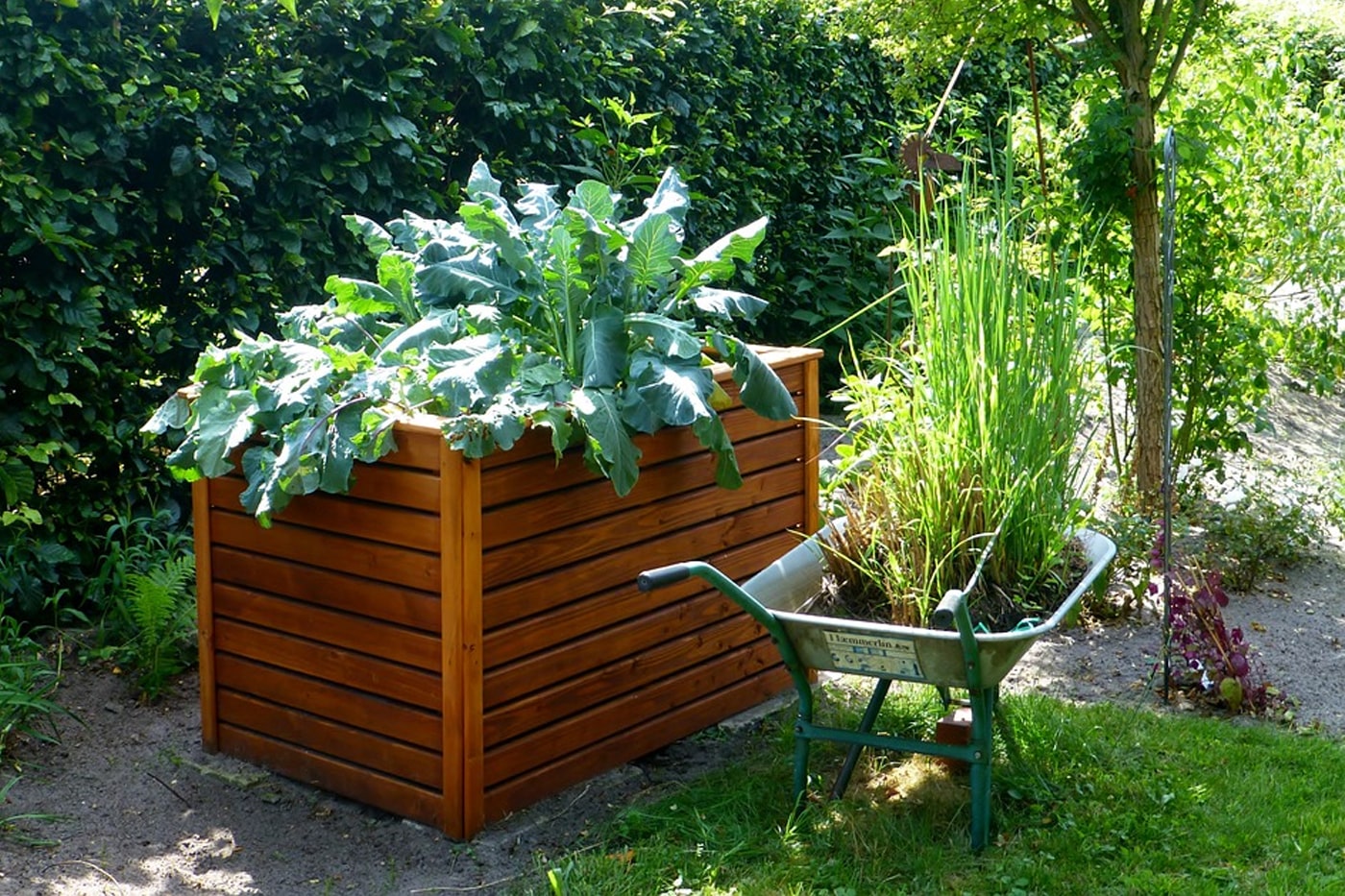Garden beds come in different shapes and sizes. If you’re planning to give your garden a much-needed update, adding ECOgardener raised beds — whether an elevated raised bed or a tiered garden bed — will improve the look and efficiency of your outdoor space.
But you can’t simply dig around to build a garden bed and then call it a day. You must figure out the size and shape that suits the space and get the measurements right to construct a perfectly-sized bed for the garden. Also, the soil volume you’ll need will depend on the garden bed size. Remember, different plants require different soil types; depending on your soil type, you might need a bigger or small garden bed.
Contents []
The Importance of Assessing the Garden Before Building Garden Beds
It’s essential to plan the size and location of the garden bed because most crops require at least 6 hours of full sunlight daily. You must choose the perfect site for the garden bed and measure the area accurately if you want a bountiful harvest.
The area where you will build the garden bed should be easy to access, so you’ll have no problems doing your garden tasks, like amending the soil with compost, weeding, or pruning. Of course, the plants have to access all the necessary parameters to thrive.
A small garden should have beds with thin borders to make the most of the available space. Big, deep, raised beds are best for large gardens.
Measuring Raised Garden Bed

The standard size of raised beds is 4 feet wide x 6 to 8 feet long. This size is versatile – it fits most plant sizes without affecting access for digging and weeding. The garden bed should be accessible from both sides, allowing you to reach past the center from any side. If a garden bed is set against a wall or fence, it should be about 2 to 3 feet wide so you won’t have problems reaching its center. The height of the raised bed should be at least 6 inches or 15 cm for most plants. For root crops, the height should be at least 12 inches or 30 cm.
Calculating the Soil Volume
Different garden bed shapes require different soil volumes. The easiest to calculate is the traditional rectangular or square garden beds. You’ll only measure the length, width, and height of the raised bed and use this formula to get the soil
volume: V = L x W x H
V – soil volume
L- length
W- width
H- height
Measure the garden bed’s length, width, and height using a tape measure. For example, if your garden bed is 6 feet long, 3 feet wide, and about 1.4 feet, the measurement will be: 6 x 3 x 1.4 feet, and the product is: 25.2 cubic feet. Now, divide the total by 27 to get the number of cubic yards, which is 0.9.
Planning Your Garden Bed Setup
Ready to set up your garden bed in your outdoor space? Here’s a step-by-step guide how:

Step 1: Choose the plants to grow
This is the first step. The plants you choose must fit the structure. A small garden bed is best for small plants and deep ones for root crops. Once you’ve determined the size of the garden bed needed, you need to figure out the arrangement of the plants.
To create an attractive design, you’ll need filler plants, tall plants, and creeping plants. Evergreens and annuals can be added for interest. The tall plants should be planted in the middle to the back of the bed because they create shade and might stunt low plants near them. Fillers go in between plants. Plant multiples of the same variety in odd numbers (3’s or 5’s) instead of even numbers to make the arrangement look natural.
Step 2: Installing irrigation
If you want to install a drip irrigation system using a line running from your rain barrel or tap, this should be done before filling the garden bed with soil. This way, the hoses can be attached easily within the irrigation system and hidden under layers of mulch.
Step 3: Amend the soil
Fill the garden bed with soil. Some plants love slightly acidic soils, while others prefer a more neutral pH. You’ll need to adjust the pH of the soil to cater to certain plants. Peat-free moss or well-rotted manure helps improve the quality of the soil, while organic compost brings nutrients back into the soil. You can also use organic mulch to protect plant roots, prevent erosion, and insulate the soil.
Step 4: Add some garden decor
Water features, a trellis, and various garden ornaments will bring any arrangement to life. These should be set in place before planting. This goes especially for oversized ornaments and frameworks, so you can easily plan the rest of the garden bed design.
Step 5: Mind the space between
Before finally planting the new plants into your garden bed, lay them out in pots in the same arrangement you’re planning to see how the design looks. Be sure to leave ample space between the plants to give them room to grow.
Be sure you have the right garden tools to execute the design. Once satisfied with the final look, start transferring the plants to the ground. Give each one a long drink after planting.
When planning your garden bed arrangement, you must check the size of the outdoor area where you will set the bed, the kinds of plants you want to grow, and the amount of soil you’ll need to complete the project.
Are you ready to add a garden bed to your garden? You’ll also need the right tools to execute the design easily! Shop here to invest in high-quality gardening tools and raised beds.



